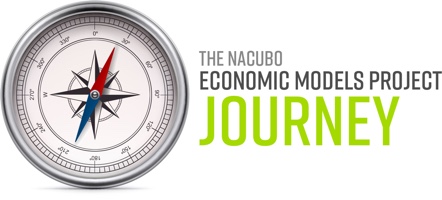
Mission
Colleges and universities must be mission-centered as they undertake transformation. Unfortunately, an institution’s mission is often mistaken for its mission statement—but the two are quite different. Mission is far more specific than a mission statement, which frequently simply speaks to excellence in teaching, research and service. While those are noble goals, they do not tell us why a particular institution should exist or what its special contribution is to American higher education.
“We are limited by the ungodly combination of honoring tradition and unrealistic ambition—this is higher ed’s affliction.”
Participant in a NACUBO Economic Models Project focus group
The mission of a college or university identifies its niche. It encompasses the unique qualities and characteristics that excite and engage the individuals and communities the institution serves. Those unique characteristics may be related to the college itself – its academic focus, size or location – or to the people it serves. Perhaps it has a gender-based mission or a religious affiliation.
Because almost all institutions operate in highly competitive environments, it is vital that each one “really look for distinctive, strategic niches and places of comparative advantage” rather than simply trying to imitate what others are doing, says Gary Rhoades, Ph.D., director, Center for the Study of Higher Education at the University of Arizona, in this video.
For that reason, examining an institution’s mission requires a deeper examination of the college or university with a focus on future reality that is not unduly hampered by legacies of the past.
Institutional Missions
Colleges and universities across the United States are re-examining their missions to determine which aspects are core to their institutions, and what could and should change to meet the changing economy and society of the 21st century. In Florida and some other states, former two-year community colleges are now offering four-year degrees. Often those four-year programs are responses to worker shortages in skilled industries like nursing and applied technologies. Some liberal arts colleges, challenged by concerns about affordability and employability, are finding ways to embed their liberal arts focus into professional programs.
Case Study: Cedar Crest College
One example is Cedar Crest College in Allentown, Pennsylvania, which has adopted a “liberal arts with helping hands” mission that melds the skills garnered in its traditional curriculum – problem solving, communications, and critical thinking – into healthcare programs needed in its aging community.
To assist institutions in understanding, analyzing and reframing their missions, a series of questions has been developed for college and university leaders to initiate necessary conversations with constituents about mission innovation. The questions should be posed in both the current tense, to gain understanding of the current mission, as well as in the future tense, to develop goals for the future. These begin with:
- What is your college’s purpose, and what should it be five, 10, or 20 years from now?
- What individuals and communities do (will) you serve?
- What outcomes do (will) you produce – for example, certificates, badges, degrees – and in what fields and disciplines?

To explore additional information or references about the importance of institutional mission to economic sustainability, visit the EMP library.





